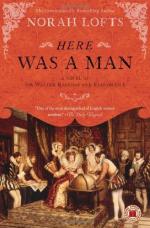|
This section contains 15,756 words (approx. 53 pages at 300 words per page) |

|
SOURCE: "The Work of Gender in the Discourse of Discovery," in Representations, No. 33, Winter, 1991, pp. 1–41.
In the following essay, Montrose examines the cultural background of Raleigh's The Discoverie of Guiana (1596), focusing specifically on the presence of such opposing values in the work as European and Indian, English and Spanish, culture and nature, and male and female.
Early modern Europe's construction of its collective Other in "the New World"—its construction of the "savage" or the "Indian"—was accomplished by the symbolic and material destruction of the indigenous peoples of the Western Hemisphere, in systematic attempts to destroy their bodies and their wills, to suppress their cultures and to efface their histories. This process of protocolonialist "othering" also engages, interacts with, and mediates between two distinctive Elizabethan discourses: one, articulating the relationship between Englishmen and Spaniards; the other, articulating the relationship between the woman monarch and her masculine subjects...
|
This section contains 15,756 words (approx. 53 pages at 300 words per page) |

|


